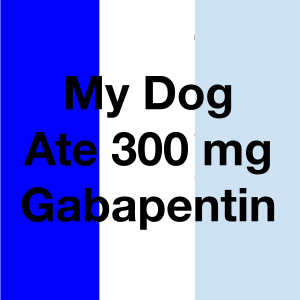
Your pup suffers from severe allergies, and the poor fur kid is itching like mad. You take him to the vet, who runs a bunch of tests, pokes, and prods.
His mutterings are accentuated by the occasional “hmmm” and “I see.”
Finally, he looks up from your pup, takes a deep breath, and breaks the bad news: your fur kid suffers from severe allergies, and he’s prescribing Prednisone to alleviate the symptoms.
Hang on now, you think. Isn’t Prednisone a human medication?
Is it safe for dogs, and how long can your fur kid take it without growing an extra ear or whatever the side effects are?
Don’t worry. We’ve got you covered. Here’s everything you need to know.
What is Prednisone?
Prednisone is a medication meant to suppress inflammation in humans.
The main ingredient in these tablets is a glucocorticoid, a type of steroid which suppresses the immune system.
That’s how it decreases inflammation – inflammation is your immune system fighting off baddies in your body.
By suppressing the immune system, you’re tying its hands behind its back, allowing the inflammation to go down.
At the same time, synthetic drugs make the baddies go away.
It’s often used by people suffering from COPD (chronic obstructive pulmonary disease), arthritis, blood disorders, skin diseases, severe allergies, eye problems, and immune system disorders.
How is it used to treat dogs?
Vets often prescribe Prednisone for dogs.
Here, it’s used as an immunosuppressant and anti-inflammatory medicine, much the same as with humans. Conditions that might earn your fur kid a prescription include
– Allergic reactions
– Skin diseases linked to inflammation
– Arthritis and orthopedic diseases
– Asthma
It’s also often used as replacement therapy for dogs suffering from endocrine (hormonal) disorders, such as Addison’s disease.
Here, your fur kid’s body lacks a specific hormone or nutrient, which is then given as medication.
How long can a dog stay on Prednisone?
If your fur kid uses Prednisone for a long time, there are many adverse side effects to watch out for. That’s why vets typically prescribe Prednisone for a limited time, usually three to four months.
By limiting the time your dog uses this medication, they limit the potential side effects, and the likelihood of them developing.
If your dog is very ill, long-term use of this medication might be unavoidable. In that case, here’s a list of unfortunate side-effects that could occur:
Five long term effects of Prednisone?
Unfortunately, the long-term side effects of giving your pup prednisone are pretty bad. Here are some of them:
Obesity due to increased appetite (polyphagia)
Prednisone increases your fur kid’s appetite through a condition called polyphagia.
This means his body’s normal “full” response gets broken.
Now, he’s eating like there’s no tomorrow, even though his body doesn’t need the extra nutrients.
Unfortunately, this leads to extreme weight gain and obesity, which is also linked to diabetes and other health issues, like high blood pressure.
Why does Prednisone do this, though?
It’s an artificial stress hormone, mimicking cortisol.
This hormone binds the part of the brain that controls hunger, stimulating your appetite. It’s like stress-eating, but worse.
Diabetes mellitus
Diabetes is a condition where the body doesn’t produce enough insulin to help regulate your fur kid’s blood sugar levels.
This condition is often caused or exacerbated by obesity since your poop dog’s body is fighting a losing battle against all sorts of imbalances.
Long-term diabetes could lead to blindness and frequent infections, and it is often hard to treat and manage.
Pancreatitis
Long-term use of Prednisone can cause pancreatitis in dogs.
This is an inflammatory reaction that causes your fur kid lots of pain.
Basically, your pup’s pancreas is digesting itself, because the Prednisone triggered the wrong hormone at the wrong time. It sounds super painful!
Muscle weakness
Dogs who are on long-term Prednisone treatment often show muscle weakness.
That’s because the Prednisone sometimes triggers protein catabolism (breaking down the protein in their muscles).
So, basically, your fur kid’s muscles are eating themselves, and then he doesn’t have enough left for him to carry on as normal.
Hair loss
When your pups takes Prednisone for a long time, he could develop Cushing’s disease, which results in hair loss, among other things.
Sometimes, this hair loss is reversible, but not always.
What are the side effects?
Even when your pup only takes Prednisone for a short while, there are still some nasty side effects to look out for. Luckily, most of them go away when you stop the medication.
Here are some of them:
– Vomiting
– Panting
– Diarrhea
– Lethargy
– Weight gain
What is the correct dosage for my dog?
Prednisone dosage depends on your fur kid’s weight, so the vet will calculate the dosage to suit your pup’s individual needs. He could prescribe a single dose or multiple doses per day. Whatever the case, stick to your vet’s instructions to give your fur kid the best shot at recovery. This will also minimize potential side effects.
Can my dog overdose on it?
Yes, dogs can overdose on Prednisone. Signs of an overdose overlap with the common side effects of the medication, so you might miss them. Keep a sharp eye on your pup if he’s taking Prednisone for any of the following signs:
– Vomiting
– Fever
– Seizures
– Lethargy
Increases heart rate
If you spot any of these, or if your fur kid is acting odd, take him to the vet for a check-up. Rather safe than sorry, right?
Is it safe to be used with puppies?
It’s debatable whether Prednisone is safe for puppies since it stunts growth and can cause ulcers. Vets could prescribe it for puppies or pregnant dogs under emergency conditions. So, it’s not necessarily safe, but it could be the lesser of two evils in severe situations.
How long does it take to work on a dog?
Prednisone is a highly effective treatment and could show results in as little as one or two hours from the first dosage. That’s really quick! Don’t stop using it when you see signs of improvement, though, since stopping this treatment abruptly could cause the symptoms to come back with a vengeance. It could even cause new ones to form, which would be terrible for your poor fur kid. Always follow the vet’s instructions in weaning your fur kid off this medication. Or any other medication, for that matter.
What are the other main steroids used with dogs?
Typically, vets would prescribe Prednisone or Dexamethasone for dogs. These artificial steroids suppress the body’s immune response and help fight inflammation. In some cases, vets could prescribe other steroids as well. These are divided into seven categories, each with its pros, cons, and way of working.
Glucocorticoids
These are the most common types of steroids vets use, and Prednisone is one of them. They reduce inflammation at low dosages and suppress the immune system at high dosages. There are many ways of administering these steroids to your fur kid, including injection, topically (spread on the skin), orally, or by inhalation. They’re not meant for long-term use.
Mineralocorticoids
These steroids maintain the balance of water and electrolytes in the body. They can be given as an injection or orally. There aren’t a lot of side effects with these drugs, although your pup can get quite ill if you stop the treatment abruptly.
Adrenal Cortical Steroids
This type of medication stimulates ACTH (adrenocorticotropic hormone), used to diagnose Addison’s and Cushing’s diseases in dogs. These are injected into your fur kid once as part of the test, so side effects aren’t expected.
Anabolic Steroids
These steroids aren’t commonly used anymore since they cause fertility issues and birth defects in dogs. However, they are sometimes used to stimulate weight gain and appetite, increase strength, and treat anemia in dogs suffering from a long-term illness.
Estrogens
This medication is sometimes given to female dogs to treat urinary incontinence when safer medication doesn’t work. Vets don’t generally like this type of treatment, though, since the long-term side effects are pretty severe, including the risk of cancer, bone marrow suppression, and fatal uterine infections.
Progestins
This medication treats false pregnancies in female dogs and benign prostatic hypertrophy in male dogs, and modify aggressive behavior. The side effects are pretty severe, so this treatment isn’t common.
Androgens
These steroid hormones treat urinary incontinence in male dogs and alleviate false pregnancies in female dogs. As with some other types of steroids, the side effects are pretty bad, including cancer risk and liver toxicity. So, this treatment isn’t that common.






